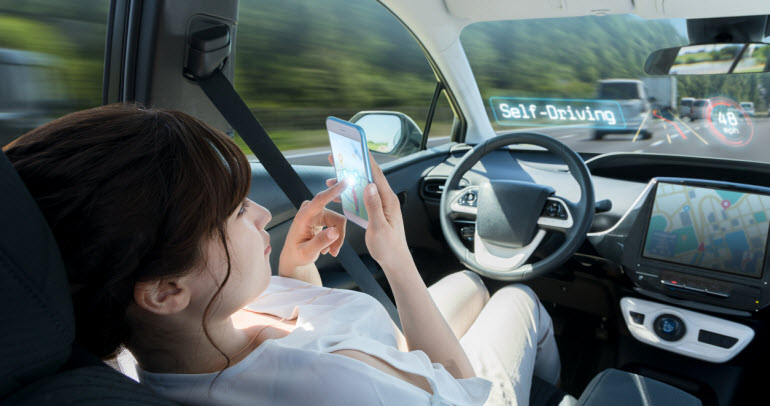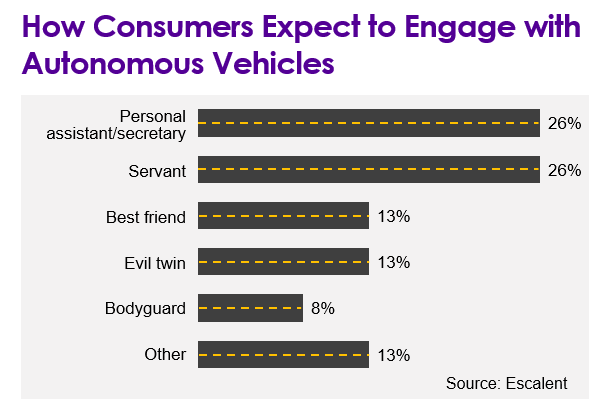
Editor’s note: With more autonomous features making their way into today’s cars, consumers are increasingly exposed to the technology and beginning to consider what it could mean for their own lives. Our automotive and technology teams recently co-developed a three-part blog series to address the most important questions autonomous vehicle developers face today.
From the movies to our garages, the slow and steady development of autonomous vehicles (AVs) seems inevitable. Now, thanks to companies like Tesla and Cadillac, drivers are getting their first taste of a hands-off experience in their car, prompting some to reconsider the role of the automobile in their lives.
How AV Technology Changes the Driving Experience
While technology and trust are still major hurdles to the widespread adoption of AVs, automakers and AV developers are eager to wrap their arms around the implications of drivers effectively becoming passengers. Our latest paper, Friend, Servant or Evil Twin: Forging a positive driver-car relationship with self-driving vehicles, explores the ways consumers expect to use AV technology after it becomes mainstream, offering insights for those looking to accelerate education and, in turn, adoption.
To better understand consumers’ priorities for self-driving cars, we asked survey participants to ascribe roles to their envisioned future use cases of AVs. Asked to choose just one “persona” from our list of likely use cases, consumers of all ages were clear about their expectations. Practical, function-oriented uses lead the way, with 52% of consumers categorizing future self-driving vehicles as personal assistants or servants.

Of particular note, buyers younger than 30 are far more likely than those over 60 to see such technology as a best friend (18% vs. 4%) or bodyguard (14% vs. 2%).
By understanding the value of vehicle autonomy to consumers, AV makers seeking to market the vehicles today should play up the ways such technology makes drivers’ lives easier and safer, from everyday activities like their morning commute and grocery shopping to date nights and road trips. However, as consumers learn more about the benefits of AVs, and younger, more tech-friendly buyers set the stage for broader adoption, those priorities may change over time.
While consumers across the board currently see these vehicles as service pods, the rise of the digital assistant on their handheld devices and in their homes is likely to impact their attitude in the long run—something many huge tech firms are counting on.
Do consumers expect the likes of Amazon, Apple and Google to play a role in the broad adoption of AVs? To learn more, go to part three in our series, or revisit part one to find out how much control drivers are willing to give to autonomous vehicles.
Download Friend, Servant or Evil Twin: Forging a positive driver-car relationship with self-driving vehicles to get a closer look at consumers’ expectations regarding autonomous vehicles and how to build public excitement.









